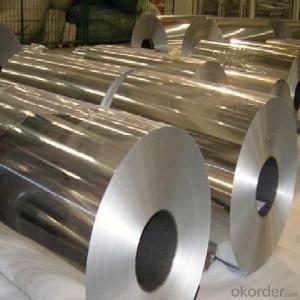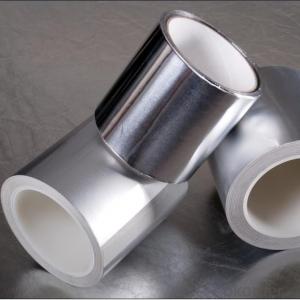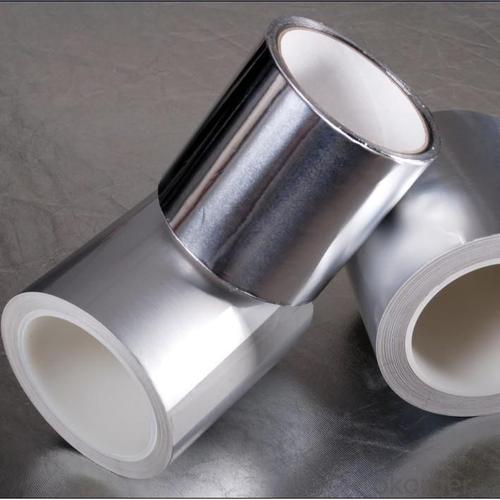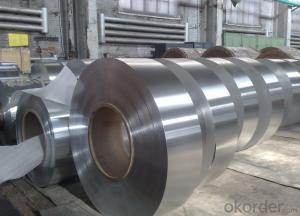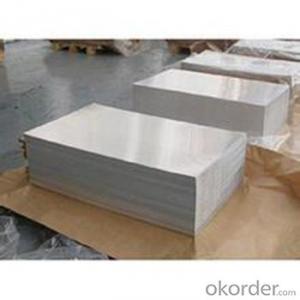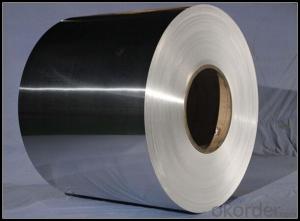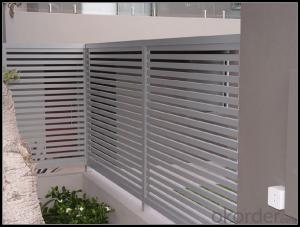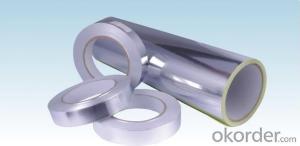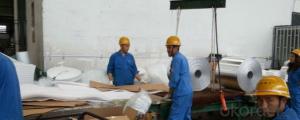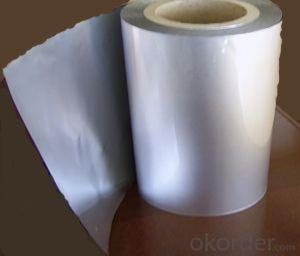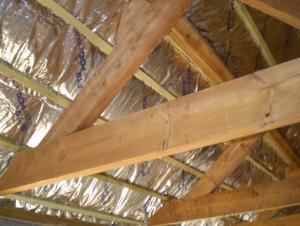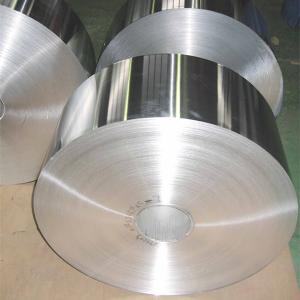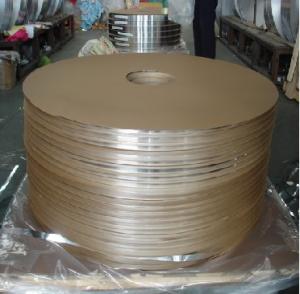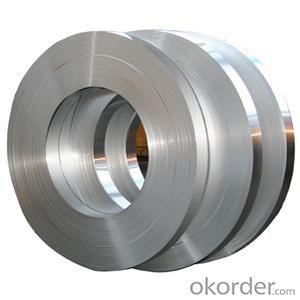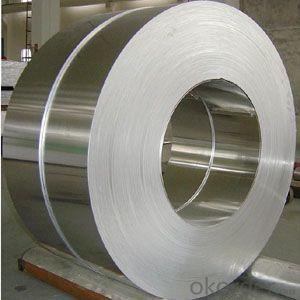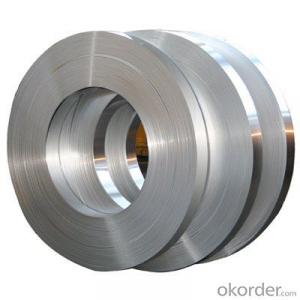Thin Strips of Aluminum Al+Pet+Ldpe Insulation and Bubble Foil Mylar Film
- Loading Port:
- Shanghai
- Payment Terms:
- TT OR LC
- Min Order Qty:
- 12 m²
- Supply Capability:
- 50000000 m²/month
OKorder Service Pledge
OKorder Financial Service
You Might Also Like
Specifications
Features high peel adhesion with good tack, temperature and aging resistance, and water vapor resistance
Aluminum Foil Tape Features:
1) High tensile strength aluminum foil made from special aluminum
alloy, coated with aggressive solvent-based acrylic adhesive,
which provides high peel adhesion and quick sticking
2) Designed for sealing joints and seams of foil jacketing in
air-conditioning duct work
Specifications:
1) Foil thickness: 18, 22, 26μ
2) Roll width: 48, 50, 60, 72, 75, 96, 100mm
3) Roll length: 27, 30, 45, 50m
4) Log roll: 1.2 x 45m, 1.2 x 50m
5) Jumbo roll: 1.2 x 1200m, 1.2 x 1000m
Inner packing:
Cut roll: printed core and shrink wrapping
Log roll: cardboard wrapping
Jumbo roll: plastic film + corrugated board wrapping
Outer packing:
Cut roll: carton
Log roll: carton + pallet / wooden case
Jumbo roll: wooden case
Aluminum foil tape has many uses in the electrical, HVAC and construction industry. It can be used in
the jobs requiring moisture and chemical resistant, thermal conductivity, flame resistant, heat and
light reflectance, and weatherability. There are several different styles of tape avaiable. Including
acrylic adhesive, line-less, polymer coated and flame resistant aluminum glass tape.
Foil tape with an acrylic adhesive is used for sealing off vapors in fiberglass duct board, sheet
metal ducts and FSK systems, It is ideal for use in HVAC systems. Due to its high tack cold weather
acrylic adhesive, which helps it to adhere well, even in periods of low temperature and high humidity.
- Q: What benefits can be gained from incorporating aluminum strips in construction projects?
- <p>Aluminum strips offer several advantages in construction, including high strength-to-weight ratio, which means they are strong yet lightweight. They are also resistant to corrosion, making them suitable for outdoor applications and harsh environments. Aluminum strips are easy to work with, allowing for easy installation and customization. They are also energy-efficient, as they reflect heat and can help reduce cooling costs. Additionally, aluminum is recyclable, contributing to sustainability and reducing waste.</p>
- Q: What characteristics of aluminum strips make them ideal for construction purposes?
- <p>Aluminum strips are suitable for use in construction due to several key properties. They are lightweight, which reduces the load on structures and makes them easier to handle and install. They possess high strength-to-weight ratio, ensuring durability and resistance to deformation. Aluminum strips are also corrosion-resistant, protecting against rust and other forms of decay, which is crucial for long-term structural integrity. Their excellent thermal conductivity aids in heat management, which is beneficial in both heating and cooling applications. Furthermore, aluminum strips are malleable and can be easily shaped and bent, allowing for versatile design and construction. Lastly, they are recyclable, contributing to sustainability and reducing environmental impact.</p>
- Q: This question asks if it is permissible to use recycled metal sheets in construction within the user's specific geographical area.
- <p>The legality of using recycled metal sheets in construction projects varies by region and state. It is essential to consult local building codes and regulations, as they dictate the acceptable materials for construction. Some areas may have strict guidelines regarding the use of recycled materials due to concerns over structural integrity and safety. In other regions, there may be incentives or regulations promoting the use of recycled materials for environmental and sustainability reasons. Always check with your local building department or consult a construction professional to ensure compliance with all applicable laws and codes.</p>
- Q: Is it possible to use aluminum strips as a material for indoor flooring or wall cladding?
- <p>Yes, aluminum strips can be used for both indoor flooring and wall cladding. They are lightweight, durable, and resistant to corrosion, making them suitable for various interior applications. Aluminum strips are also easy to install and maintain, and they can provide a modern, sleek look to any space. However, it's important to consider the specific requirements of your project, such as load-bearing capacity, thermal insulation, and aesthetic preferences, to ensure that aluminum strips are the right choice for your needs.</p>
- Q: What are the environmentally friendly options for aluminum strips?
- <p>Yes, there are environmentally friendly types of aluminum strips. Recycled aluminum strips are more eco-friendly as they require significantly less energy to produce compared to virgin aluminum. Additionally, using aluminum strips with a high recycled content reduces waste and conserves natural resources. Another option is to look for aluminum strips that are produced using renewable energy sources, which further reduces their carbon footprint. Lastly, choosing aluminum strips with a lower coating or treatment that is biodegradable or has a lower environmental impact can also contribute to their environmental friendliness.</p>
- Q: This question asks about the various color options available for aluminum strips.
- <p>Aluminum strips are available in a variety of colors to suit different applications and aesthetic preferences. Common colors include silver, which is the natural color of aluminum, black, white, and clear anodized. Additionally, they can be coated or anodized in other colors such as gold, bronze, blue, red, and green. Custom colors are also possible with specialized coating or anodizing processes. The choice of color can depend on the specific use of the aluminum strip, such as for decorative purposes, architectural applications, or industrial uses where color coding is required.</p>
- Q: What factors should be considered to determine if an aluminum strip is appropriate for a specific project?
- <p>To determine if a particular type of aluminum strip is suitable for your project, consider the following factors: the strip's mechanical properties such as strength and ductility, its corrosion resistance, and its ability to withstand the specific environmental conditions of your project. Check the strip's thickness and width to ensure they meet your project's requirements. Assess the strip's surface finish and any required coatings or treatments. Consult the strip's technical specifications and compare them to your project's needs. If necessary, conduct tests or seek advice from material experts to ensure compatibility.</p>
- Q: Is it possible to use aluminum strips to construct a solar reflector system for residential or commercial purposes?
- <p>Yes, you can use aluminum strips to create a solar reflector system for your home or business. Aluminum is a reflective material and can be shaped into strips to reflect sunlight. These strips can be arranged in a way to direct sunlight towards solar panels or into specific areas to reduce the need for artificial lighting and heating. However, for optimal efficiency, you should consider the angle of reflection, the positioning of the strips relative to the sun's path, and the overall design of the system. Consulting with a professional in solar technology can help ensure that your solar reflector system is effective and safe.</p>
- Q: This question asks for a comparison of the benefits and drawbacks of using aluminum strips.
- <p>Aluminum strips offer several advantages, including high strength-to-weight ratio, making them lightweight yet durable. They are also corrosion-resistant, which is beneficial in various environments. Aluminum is a good conductor of heat and electricity, which is useful in applications requiring thermal or electrical conductivity. Additionally, aluminum is cost-effective and widely available. Disadvantages include its lower strength compared to some other metals, making it less suitable for heavy-duty applications. It can also be prone to denting and is not as easily repaired as some materials. Lastly, while it's recyclable, the recycling process can be energy-intensive.</p>
- Q: What's the difference between aluminum strip and aluminum alloy?
- The most common aluminum alloy is magnesium aluminum alloy, widely used in doors and windows frame. Light quality, high hardness, high strength and beautiful appearance. Of course, the magnesium aluminum alloy is also very many kinds, the use is more widespread. The aluminum is soft, low strength and easy to corrode. Aluminum cookers also cause excessive aluminum poisoning
Send your message to us
Thin Strips of Aluminum Al+Pet+Ldpe Insulation and Bubble Foil Mylar Film
- Loading Port:
- Shanghai
- Payment Terms:
- TT OR LC
- Min Order Qty:
- 12 m²
- Supply Capability:
- 50000000 m²/month
OKorder Service Pledge
OKorder Financial Service
Similar products
Hot products
Hot Searches
Related keywords
